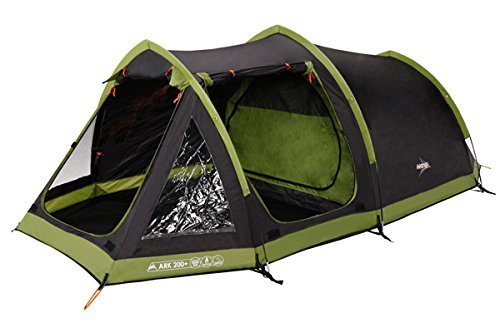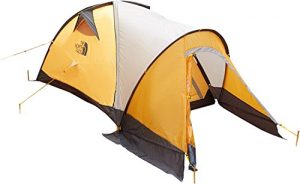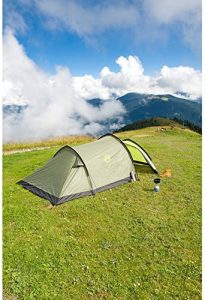
Learn How to Pitch a Tent
When you first need to learn how to pitch a tent, it can seem like a confusing and difficult task. There is a huge amount of material, there are poles and pegs, and understanding how it all fits together can be tricky. While there are some people who have the pitching method for their tent perfected, there are also some who find the whole process stressful and overwhelming.
To help you prepare for your next camping trip, we’ve gathered some useful advice to help things go a little smoother.
How Do I Pitch A Tent?
Let’s start with a tried and tested method of pitching a tent. This one is used by many people and can make the whole process simple and effective.
Pitching a tent this way has several advantages:
- It’s fast
- It’s simple
- It removes the need for a lot of heavy lifting
- If it’s done correctly, you should have a very well pitched tent
- With some practice, most tents can be pitched by one person
It is worth remembering that many people have their own preferred method of pitching a tent. The method we’ve shown may not be the ideal one for you or even your particular model of tent, but it is a popular and proven method so its a great starting point.
This method should work with almost any steel or aluminum pole tent. Fibreglass pole tents can also be pitched with this system, but you should ensure that you don’t put too much stress on the poles.
The Method
1. Pitching a Tent
One of the most important steps is selection of a suitable pitching area. Find a good space to actually pitch your tent, ideally somewhere with a nice view (if you’re pitching in the dark this may be tricky!). Empty the contents of the tent bag and check that you have all the different component parts required to actually pitch the tent. This should include the flysheet, groundsheet, pegs, poles and inner tent where applicable.
If you want to be super organised, separate and arrange the various parts, connect the poles, and unfold the flysheet and groundsheet.
2. Setting the Groundsheet
Unfold the groundsheet and place it on the ground where you want to pitch the tent. This will give a good visual representation of the space and shape the tent will use. It’s also useful on a wet day, as it’ll help keep the flysheet dry and free from dirt when laying it out.
It can be a good idea to peg the groundsheet down at the corners to keep it’s shape and stop it moving around too much under foot or in a breeze. Obviously, if your tent has a fully sewn in groundsheet, just skip this step and lay the whole thing flat on the floor (as in step 3).
3. Setting Up The Flysheet
Get the flysheet and spread it out flat on top of your groundsheet, (keep in mind that the front door should be facing forward!). Make sure you have the groundsheet covered (unless of course both the groundsheet and flysheet are already connected).
4. Corners
Peg down each of the corners of your flysheet, doing your best to line them up so they are square.If you can’t get it perfect that’s ok, as they can be adjusted later on anyway.
5.Middle Pole
Now for an important step. Take the middle pole and thread it through the sleeve where it’s designed to go. Only do this with the middle pole for now.
If there’s no middle pole, e.g. on tents with an even number of poles, just select one of the two pole sleeves nearest to the middle.
Make sure all of the tension straps are fully loosened at this point. These straps are usuallyconnected on webbing near to where the ring and pin system just below where the pole sleeve opens at each end of the tent.
It can be a good idea at this point to partially unzip any doors and windows as it will allow air to circulate and can make lifting the tent a little easier.
Attach the pin into the base of one end of your pole, then go around to the other side and do the same again. There should now be plenty of tension in the pole. If you can, stand the pole up now.
If you’ve followed the guide and have the front and back corners pegged in, the tension in the fabric will make the pole stand upright. If you’re tent is one with with steel poles, it can help to get that middle pole stood up first , so thread the middle ‘ridge’ section through the sleeve, then connect the pole on one side of the triangle, and attach the pin to the base, which should make the pole stand up. Now walk to the other side of the tent and connect the other leg to the middle section and then to the pin on the other side. Hopefully, the tent should now stand up on the middle pole.
6.Other Poles
Now that you’re first pole is setup, thread the rest of your poles, ideally starting from the middle and working your way outwards.
One good thing about pitching a tent this way is that the main pole is now in it’s correct position, and you should find that the other poles will easily thread through and attach.
Be aware that some poles may feel pretty tight, and it can sometimes help to have an extra pair of hands to bend the poles onto the pin and ring connectors.
With some models of tent it can be a good idea to now connect a front guyline at this point, as it will add stability especially in breezy conditions.
Once you’ve inserted all of the remaining poles and attached them to the pins, the tent should look pretty good.
If you have a tent with a zipped in groundsheet, this is a good time to zip it in if you haven’t already. Its a good idea to do this before you tighten any tension straps and the other guylines, as the material will become too tight to connect.
Once complete, peg out the various remaining pegging points on the groundsheet. Now tighten all the tension straps at the bottom of each pole, where it connects to the pin and ring ystem.
7.Attachments
Now go round and secure all remaining the attachments if you have any. There may be some small clips that connect the flysheet to the poles, make sure these clips are attached to the poles, as they add strength and help prevent contact between the inner and outer tent fabric.
Next, attach the inners if any remain loose.
Before you unroll and peg out the guy lines, make a final check to ensure that the tent is lined up properly, and looks reasonably straight from front corner to back corner. If needed, adjust the poles so they line up properly. You should be able to simply lift them and reposition them a tiny bit either way to line them up. You may also need to re-adjust the corners you pegged in earlier.
Make sure that you have all doors and windows zipped closed now before you tighten all of the guylines. If they are open, you may find that you can’t close the door because the guylines are now pulling on the material.
When putting pegs into the ground,try to push them in at approximately a 45 degree angle, as this will help prevent them from lifting out accidentally.
Summary
The method has several advantages, over other methods and is a good starting point for certain models of tent, especially if this is your first time pitching a tent.
We hope our quick giude has helped you learn how to pitch a tent, and if you’re looking for a new tent, then why not take a look at our fantastic range of tents and special offers.



